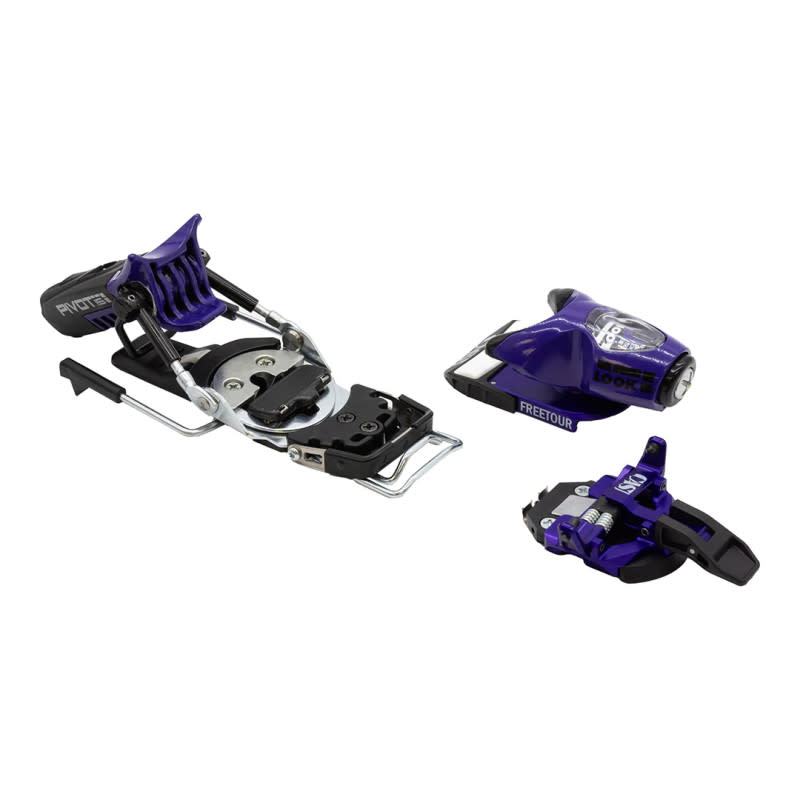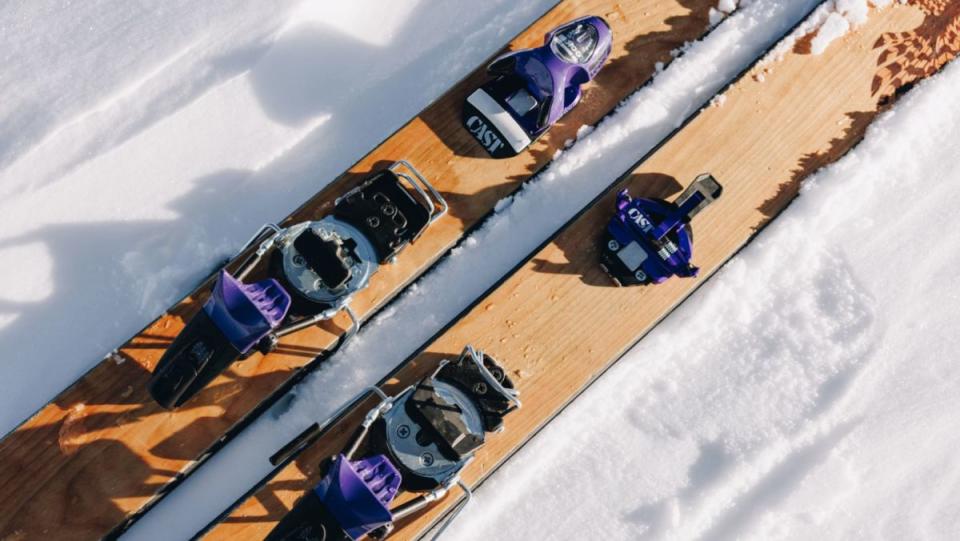CAST Touring Announces Freetour 2.0 Binding
Powder aims to feature only the best products and services. If you buy something via one of our links, we may earn a commission.
In a Nutshell
CAST has updated their Freetour binding with a new toe system that makes transitions much quicker, and simplifies the entire package.
Specs:
Stated Release Value: 6-15
Weights (prototype):
Tech toe: 87 g
Toe platform with screws: 50 g
Alpine toe: 430 g
Brake/Riser assembly: 95 g
Pivot Heel: 772 g
Total uphill weight: 1,004 g
Cost: $779.95 for total system, $349 if you include your own Pivots
The Freetour 2.0 is available now.

Photo: CAST Touring
Intro
Five years ago, in 2017, CAST announced their second touring system, the Freetour 1.0. Well before that (2013), their SI+I system was one of the very first bindings on the market that made good on the elusive promise of pin binding uphill efficiency combined with real alpine binding performance and releasability. Why the focus on dates and years in that intro? Well, I think it’s kind of absurd how far ahead of the curve CAST has always been. They were making working 50/50 bindings that outperformed much of the competition five years before Shift hit the market (and seven before the Duke PT).
And CAST isn’t some multinational conglomerate with top-secret labs and armies of engineers. It’s a dedicated crew of folks working out of Driggs, Idaho who happen to be pretty good at making products skiers actually use, as well as playing pond hockey.
Yes, I’m biased, Driggs was the center of my own little universe for the last eight years, but still, the fact that CAST beat Amer and MDV to the punch on true 50/50 bindings by that many years continues to blow my mind.
So, when CAST announced the original Freetour binding in 2018, skiers everywhere looking for a binding that toured with pin efficiency and actually skied and released like an alpine binding rejoiced. But, while that original system was serviceable, it wasn’t perfect. The toe was finicky, it could be hard to transition between tech and alpine toes, your mount had to be absolutely perfect, and things had a tendency to jam up at inopportune moments.
I experienced my fair share of frustrations with that original binding, but kept coming back to it thanks to how well it fulfilled its promise. Even in a world of Shifts and Dukes, there’s a lot to be said for a binding that doesn’t just ski “like” an alpine binding, but is one.
What’s New?
And now, CAST has updated the Freetour with a totally new toe retention system that makes it much easier to mount and use. The biggest changes are all to the toe: the Freetour 2.0 uses a totally new toe mount that does away with the individual pedestals and shoulder screws of the old version. Those were finicky for a couple of reasons. If your mount wasn’t absolutely perfect it was a pain to swap toes around, and it felt like it took a small dose of black magic to get your toes running perfectly. You had to nail the mount, play with screw tension, fiddle with tolerances, and maybe pull out your Dremel.

The new system is much tidier. There’s a slotted plate that mounts to the ski, and then both alpine and touring toes lock onto it with a spring-loaded button. It’s easier to mount and easier to use.
CAST has also updated their touring toe design with single-sided springs, similar to what you’d see on some ATK toes. Finally, they’ve also made some small tweaks to the brake retention system to help it interface with boots better, and lock the brakes more effectively.
In Use
CAST set me up with a pre-production set of Freetour 2.0s last spring, and I was able to get some time touring on them, with plenty of transitions. In short: the new binding is waaaaay better than the old one. They’re much easier to mount (I used a sketchy paper template with no issues) and so much easier to transition. Both alpine and tech toes slide on and off smoothly and are just generally nice to use.
On the way down, they ski like Pivots, because they are.

My set was pre-production, so it didn’t have quite the fine finish and some of the details that the final version has, but it still worked without a hitch. Thanks to the almost-comical storms in the mountain west hindering shipping logistics right now, I haven’t gotten my hands on the final version yet, but I’m excited to mount a pair up and get into a full review.
Quick Hits
Because this isn’t a full review of the production binding, I won’t go too far into the weeds here, but there are a few details worth noting:
Brake Retention: While the updated toe system fixes the bulk of most folks' frustrations with the original Freetour system, a lot of people had problems with the brake retention system not working as well as it needed to. It’s easy to just use ski straps to hold your brakes up, but it’s also a little frustrating. CAST says they’ve tweaked the brake holder lever, and I’m excited to see if it does a better job. I know, I know: some CAST fanatics are convinced that it’s the fault of bad mounts, not the brake holder itself; but I’ve seen way too many Pivot brakes held up with ski straps out in the wild to agree.
AFDs: The new AFD system is bolted onto the toe. The standard AFD works with both GripWalk and Alpine soles, and CAST is also making an AFD for touring boots with fully rockered soles. I had issues with the AFD falling off the original Freetour, and I’m excited to see this system fixed.
Metal: There’s a contingent of skiers who seem to believe that if something is made of metal it’s automatically indestructible, and that things made out of any other material are going to break. The new toe plate is not made of metal, but CAST says it’s “stronger than a gorilla on acid” and I’m inclined to agree with them.

Photo: CAST Touring
Flexibility: I’ve always appreciated that CAST offers kits for folks who have their own Pivot bindings, as well as second ski kits so that you can move one set of CAST bindings around easily. They continue to do that with the Freetour 2. Upgrade kits cost $350, and second ski kits cost $75.
Boots: When the original SI+I system was introduced there were very few stiff, downhill-capable boots on the market with tech fittings. Thankfully there are a bunch of really great options out there now, but CAST will still add tech fittings to your existing boots if you so desire.
For Now
We’re working on a full review, as well as a comparison of CAST, Shift, and the Duke PT, and we’re excited to go deeper there. But for now, the Freetour 2.0 fixes most of our frustrations with the original version, and we’re excited to spend more time on it.

